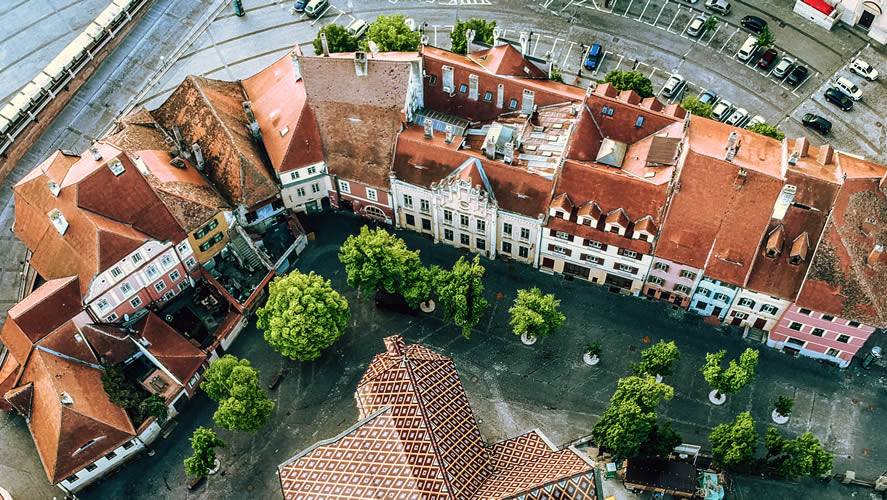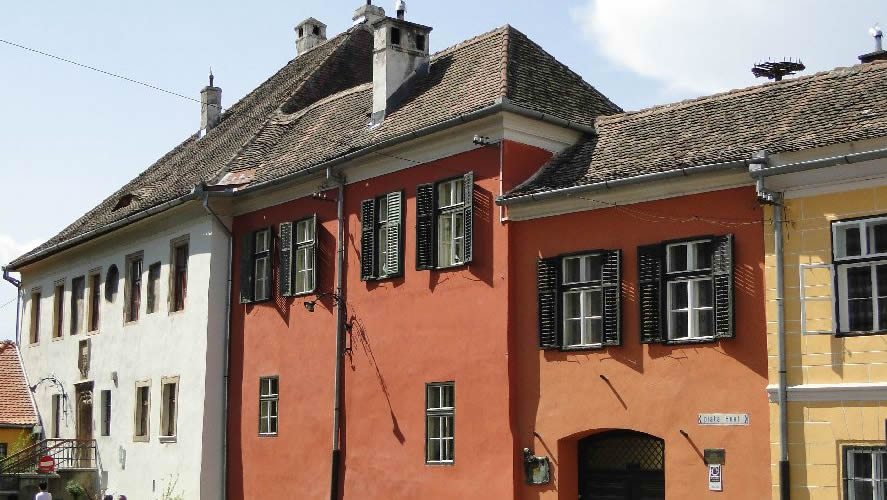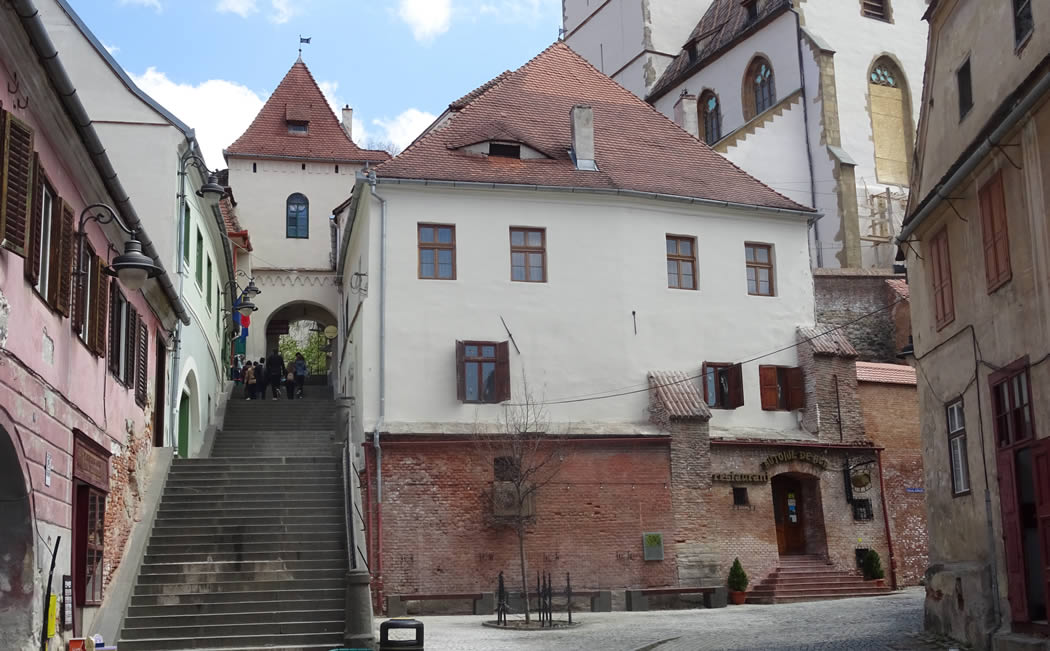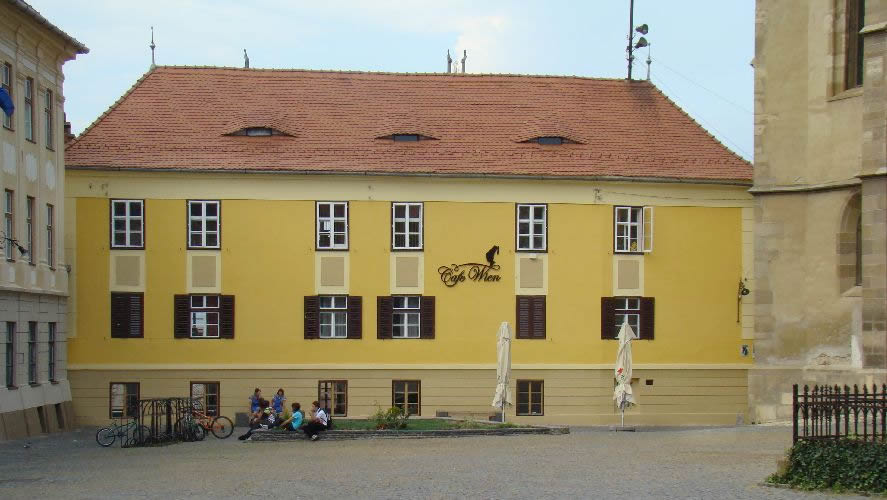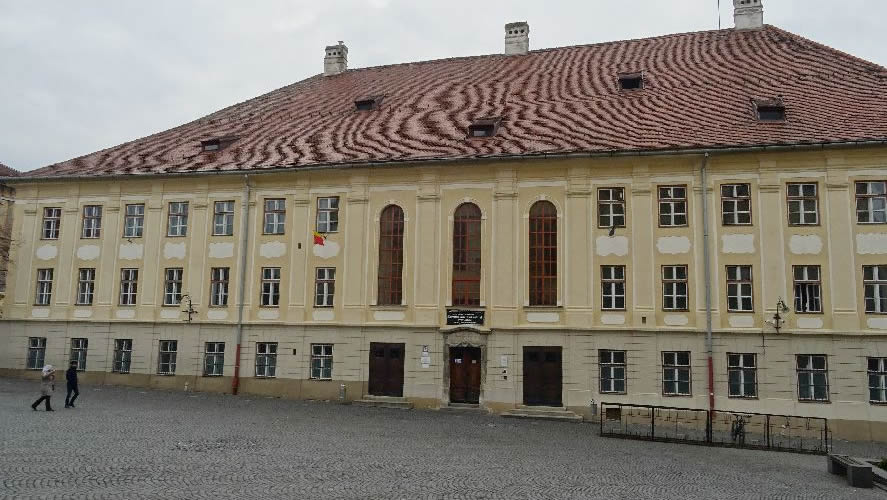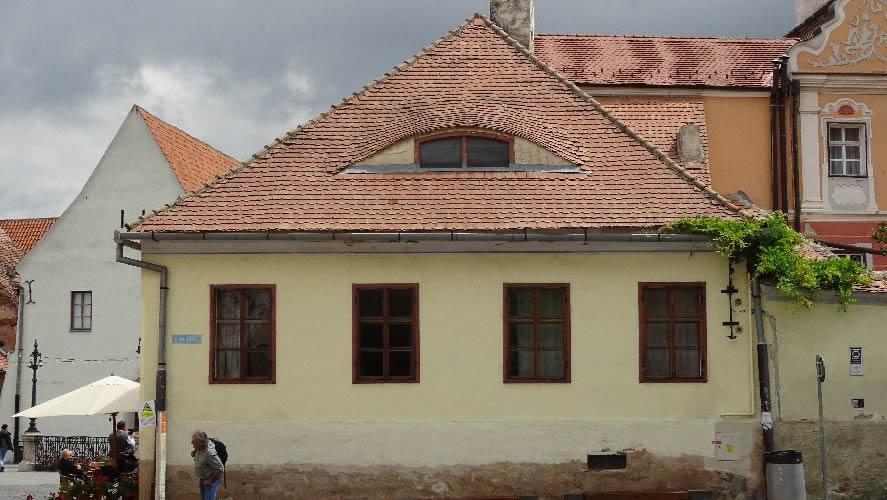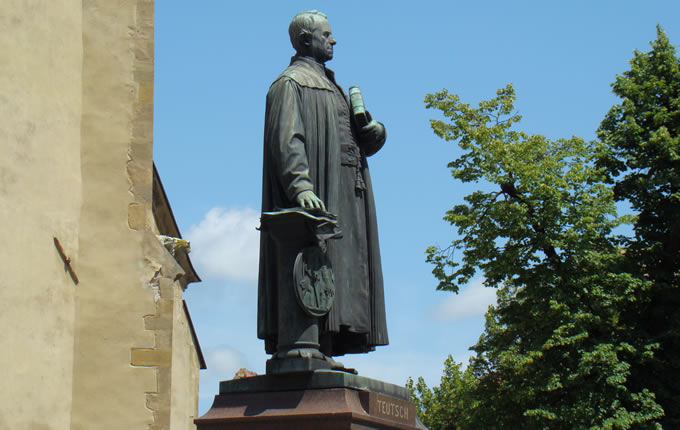Select:
MAP:
SHORT HISTORY:
The square was formed on the line of the city's first fortified precinct. The enclosure itself dates from the late twelfth century, the existence of the prepositure in 1191 being an "ante quem" term for dating today's area of the square. At that time, on the site of today's church rises at the center a Romanic basilica with a cemetery around it, to which were later added three chapels and a school, this area being used by the townspeople as a refuge in case of siege.
In 1415, in this place it is mentioned the existence of the cemeterial chapel with dedicated to St. James (Jacob), the patronate right being given by the Pope to one of vicejudges in Sibiu named Jacob. The chapel was rebuilt in the fifteenth century and in 1592 the comite Albert Huet, whose name was later given to the square, established here a school library, which operated in the neighborhood since 1380.
Also, near the chapel was the Priests' Tower and next was Thomas Gulden's house, who donated it in 1470 to the city, as the location for the city hall. The house served as the mayor's office until 1549 when the city sold the building to Gallus Lutsch and bought Markus Pempflinger's house for the new headquarters (today's History Museum).
In 1848, the old building in the churchyard is demolished, which had monk cells even before the reform and which was converted into rental house. The demolition expands the access area to Piata Mica (Small Square).
1860 – the square around the Evangelical Church is arranged
1868 – the square is paved
1883 – around the Evangelical Church a lattice is installed
1898 – the Priests Tower and Jacob's Chapel on the west side are demolished
